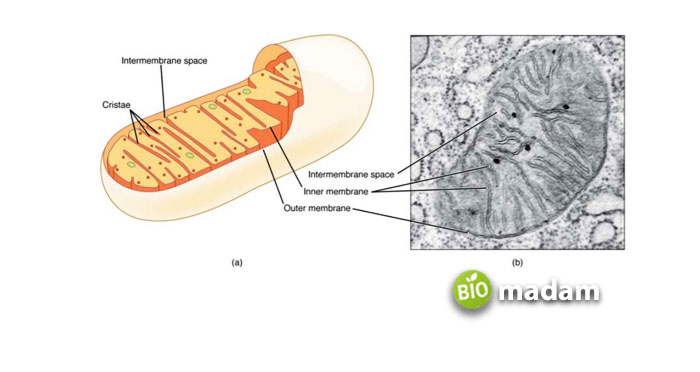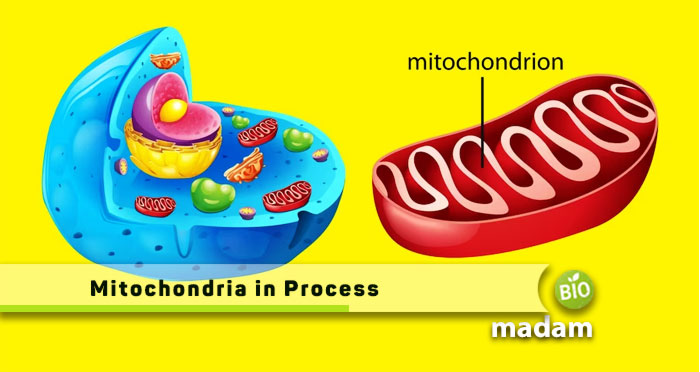Plants, animals, and fungi, all are made of the basic fundamental units called the ”cells.” These cells possess the nucleus and several other organelles that help in the survival of the cell. Different organelles are specialized to perform their different tasks. The basic functions involve transcription, translation, metabolism, and excretion. Metabolism is the most important cellular process. It involves the conversion of food to energy and is responsible for sustaining life. There are two main types of metabolism, called anabolism and catabolism. Anabolism involves the synthesis of compounds and requires energy. Whereas catabolism involves the breakdown of substances and releases energy.
In this article, we are talking about a type of catabolic reaction, i.e., Glycolysis. It is an important metabolic reaction occurring in all cells. Now, let’s explore what is glycolysis and whether it occurs in the mitochondria or not.
What is Glycolysis?
Glycolysis is a type of biochemical process that is responsible for the breakdown of glucose molecules into much simpler molecules called the ”pyruvates.” This breakdown causes a release of energy which is used by the organisms to perform their other functions. The end products of this metabolic reaction are 2 pyruvate molecules, NADH (nicotinamide adenine dinucleotide), ATP (Adenosine triphosphate), and water.
Glycolysis is the first step of cellular respiration and it is followed by other pathways including the Krebs Cycle. This metabolic pathway is also known as the ‘’EMP pathway (Embden–Meyerhof–Parnas).’’ In the 19th century, three German biochemists, Gustav Embden, Otto Meyerhof, and Jakub Karol Parnas discovered Glycolysis.
What is Mitochondria?

Mitochondria popularly known as the ”powerhouse of the cell,” are found in all eukaryotic cells. It is a membrane-bound organelle found in the cytoplasm of the cell and is responsible for producing ATP in plants and animal cells. It is the main source of energy used by the cell. The structure of mitochondria consists of an outer membrane, an inner membrane, and a matrix. Mitochondria are involved in several functions of the cell including:
- Oxidative phosphorylation.
- Regulating metabolic activity.
- Promoting the growth of new cells.
- Plays a role in apoptosis.
- Detoxifies ammonia.
- Maintains concentration of calcium ions.
- Involved in different cellular activities such as cellular respiration, differentiation, and signaling.
Does Glycolysis Occur in the Mitochondria?
No, glycolysis does not occur in mitochondria. Glycolysis occurs in the cytoplasm or to be more exact, in the cytosol. Cytosol is a jelly-like liquid substance found inside the cytoplasm. All the organelles are located inside the cytoplasm in the cytosol. It is rich in nutrients, enzymes, minerals, and other ions. These substances aid in the normal functioning of the cells.
Where Does Glycolysis Occur and Why?
Glycolysis occurs in the cytosol. The main reason behind that is glycolysis requires certain enzymes and nutrients which are only present in the cytosol. Without these enzymes, glycolysis cannot take place. Mitochondria lack such enzymes and for this reason, glycolysis occurs in the cytoplasm instead of the mitochondria.
Is Mitochondria Involved in Glycolysis?
As we have already cleared that glycolysis does not occur in the mitochondria however, it is involved in glycolysis in some way. Partial oxidation occurs during the process of glycolysis in the cytoplasm which produces pyruvates. These pyruvates are then transferred to the mitochondria where further oxidation takes place. Mitochondria play a role to liberate carbon dioxide and water molecules. Through oxidative phosphorylation, mitochondria play a small role in glycolysis to generate energy from the food ingested.
Conclusion
Cells possess different organelles that are specialized to perform certain functions. Metabolism is one such important function occurring in all cells. Anabolism and catabolism are two main types of metabolism. Glycolysis is a type of catabolic reaction of cellular respiration. It involves the breaking down of glucose molecules to generate two pyruvic acid molecules, ATP, NADH, and water. The energy released during this process is used to perform cellular functions. Glycolysis takes place inside the cytosol, containing different classes of enzymes necessary for this biochemical process. Glycolysis is the partial oxidation occurring in the cytosol, whereas the complete oxidation occurs in the mitochondria.
Frequently Asked Questions (FAQs)
Read below to find the answers to some frequently asked questions about glycolysis:
Why glycolysis does not take place in mitochondria?
Glycolysis does not take place in the mitochondria as it simply lacks the enzymes which are required to perform the glycolysis. In addition, it also lacks sufficient plasma membrane proteins required to take the glucose inside the cell.
Does glycolysis take place in all cells?
Glycolysis takes place in all cells, including prokaryotic and eukaryotic cells. It is the 1st step of respiration and is used to generate the energy required by every cell.
What type of cell can only do Glycolysis?
Mature mammalian red blood cells are only capable of performing glycolysis to generate their energy. If they are unable to perform glycolysis, they will eventually die.
How many enzymes are required for glycolysis?
A total of ten enzymes are required to perform glycolysis. These enzymes work together in a series of reactions to generate energy.

Anna has completed her degree in Pharmacy from the University of Hawaii. She is serving as a research assistant in a pharmaceutical company. She had a great interest in writing blogs, traveling to different parts of the US, and trying delicious recipes in her spare time.

